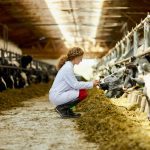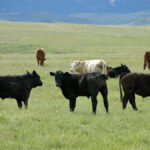Hopefully, infectious diseases don’t appear in Canada but the industry needs to have a plan in place
If there ever is a foreign animal disease outbreak in Canada, we all know it could be devastating to the industry. Contagious pathogens such as foot and mouth in bovines, sheep and swine, or African Swine Fever (ASF) in pigs, can cost individual producers in lost production and animal deaths, as well as closing the […] Read more
Be prepared for an animal disease outbreak
Hopefully, infectious diseases don’t appear in Canada but the industry needs to have a plan in place

Creative ideas on accessing veterinary care
Animal Health: A few thoughts on how producers can perhaps help fewer veterinarians reach more animals

A few key points on producing livestock
Animal Health with Roy Lewis: A mixed bag of things to consider, and important topics to discuss with your local vet

An esophageal feeder is a key tool in saving calves
Animal Health with Roy Lewis: It is an effective way to administer a range of products to newborn or sick animals

Tips for delivering a backwards calf
Animal Health with Roy Lewis: If one calf presents backwards, there is a good chance there may be another

Important scour-prevention tips for calves
Keep calving facilities clean, and focus on good herd health status

Managing the stifled cow or bull
Animal Health with Roy Lewis: A condition that can be treated, but culling may also be best option

Important to follow proper implanting technique for calves
Growth implants can generate at least a 15:1 return on investment

Producers need to be the voice of reason for vaccines
Roy Lewis: Animal health products are not intended for humans

Livestock electrocution can be natural or man-made
Animal Health: Make sure tools and electrical services are properly installed and maintained

